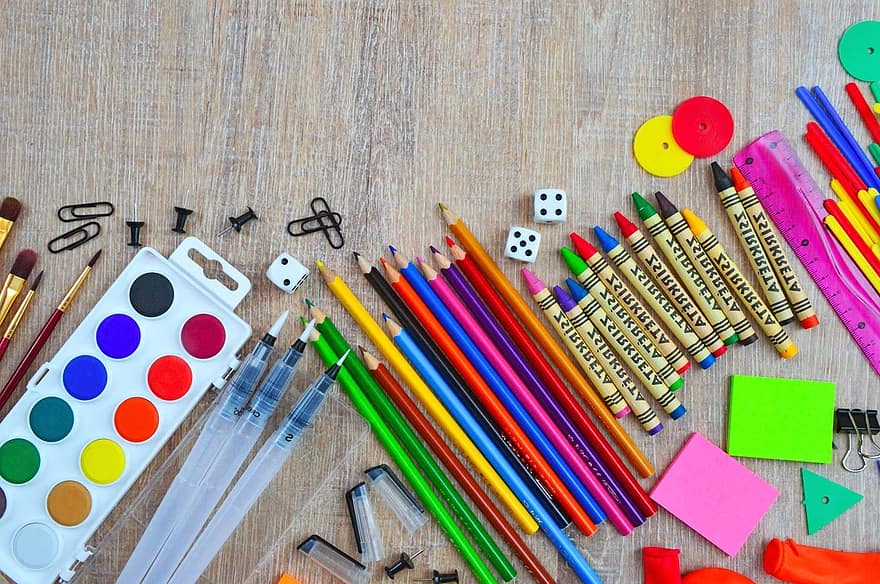“I’ve always loved the first day of school better than the last day of school. Firsts are the best because they are new beginnings.”
-Jenny Han, Author
We are all hoping that’s just what this August and September will bring – a new beginning. It has been a difficult summer. Trips were cancelled, events were postponed, and we probably didn’t get to see our friends as much as we would have liked, but now it’s time to look forward to getting back to school. A notion that, while seemingly routine, will likely look very different than years past.
Some kids aren’t physically going back to school at all. Many schools are going virtual. Others will attempt to split students’ time between home learning and on campus learning. Depending where you live, how rampant the virus reportedly is in your area, and the age of your student, their experience and yours will vary dramatically. Guidelines released by health officials are conflicting, confusing, and ever-changing as we learn more about the virus, its symptoms, and its long-term effects.
We have composed a general list of tips intended to help you prepare for and navigate some of the confusion, all while maintaining a positive outlook on the school year ahead. Let’s make the most of this new beginning!
#1 Shop for supplies
No, we don’t just mean notebooks and pencils. This year your back-to-school shopping list should get a little longer than usual to include hand sanitizer, masks (or even a face shield), possibly gloves and sanitizing wipes.
#2 Prepare the classroom
By now, it’s likely you’ve adjusted to working remotely so take the next few weeks to prepare your home for remote learning. Does your student have sufficient virtual access? Do they have the devices they will need to continue to engage with their teachers and fellow students online? Does your Wi-Fi have the capacity, speed, and consistency that virtual learning will require? Does your student have a quiet place at home to conduct their learning? A room preferably with a door to eliminate possible distractions as well as a desk to encourage comfort and productivity.
#3 Form hygienic habits
Keep a clean house. Wash your hands thoroughly and wipe down frequently touched surfaces often. Have your family, especially your children, wear their masks in public places. Discuss with your family the things they should be doing to help prevent the spread of COVID. Frequent and thorough handwashing, maintaining at least six feet of separation, avoid touching your face, etc. These are all habits to teach and practice regularly in your home so your student can more seamlessly apply them in the physical classroom.
#4 Stay informed
Know the relative status of the virus in your area. Pay attention to updates from the CDC and other reliable health organizations and sources. Also understand what measures your school district is taking to prevent the spread of the virus. If you know all of the recommendations from various sources you will be better equipped to make informed decisions about how you and your student can do your part.
#5 Learn the science
And pass it on to your student. At almost any level of education there is a way to discuss the virus and the science behind it in an engaging way however rudimentary. If your student is able to understand what the virus does and how, they are more likely to engage in the practices that will help prevent its spread.
#6 Monitor symptoms
Because many carriers of COVID can be asymptomatic, especially for a significant period of time before showing symptoms, monitoring symptoms may not be the most reliable way to prevent the spread of the virus. But, it also can’t hurt. Take your student’s temperature before they leave for school and when they come home. Does their throat hurt? Are they coughing or overly tired? Are they able to taste and smell their breakfast? The sooner symptoms are detected the less people you or your student could possibly expose the virus to. Do not go in public or let your student attend school if you or someone in your family is feeling unwell.
#7 Stay involved
Ask your student and your school administrators how you can support and ease their transition back to school. Regularly check in to ensure school work is being completed and given ample time and energy. Stay more involved than usual in your student’s academic success.
#8 Encourage physical activity
Your student will likely not be participating in any sports, school organized or otherwise, but that doesn’t mean they shouldn’t still be getting regular exercise. Find new ways to help your students stay active: take walks or runs, go on bike rides, play backyard sports, etc. This will help you and your family stay busy and promote overall health and wellness.
#9 Stay patient
Be patient with your family, your student, and your school administrators. These are unprecedented times and we will all have to form new habits and get used to inconveniences as we navigate the various and ever-changing guidelines and expectations set forth by national, regional, and local health organizations. We are all in the same boat so be kind to each other.
#10 Get creative
More than finding new ways to exercise, think more wholly how you may be able to creatively fill the gaps that might be newly forming in your student’s life. Find ways to facilitate engagement at every level. Maybe schedule regular Facetimes with friends and extended family. Research crafts and games to play with your family that will keep them not only occupied but challenged. We may not be able to return to our normal routines but we have an opportunity to discover new hobbies and interests. Take advantage of this unique time to try new things and get out of your comfort zone!





